Paint. Heal. Grow.
July 2021
Summary
Mental health, while often stigmatized, is an important issue in society, particularly in post-COVID times. Tools to address mental health and process mental health issues are needed. This Report examines the mental health benefits associated with creating expressive art using the Art4Healing® Method.
Introduction

Mental health is often a delicate discussion topic due to fear of misunderstanding or stigma. In fact, research has shown that stigma is one of the leading risk factors contributing to poor mental health outcomes. Stigma leads to delays in treatment and reduces the chances a person with mental illness will receive appropriate and adequate care. (Caddell, 2020) This report examines a tool that can help with mental health issues without stigma – creating expressive, abstract art.
Creating abstract art intuitively provides important benefits to our mental health. These benefits have been demonstrated in multiple studies and throughout our twenty years of healing art experience. Engaging in non-representational, intuitive painting is a safe, secure, and therapeutic way to explore our inner worlds, express ourselves, and develop a healthier understanding of who we are and how we relate to others.
Expressive abstract art can remove stigmas and misunderstandings around mental health topics. Spontaneously choosing colors and shapes, rather than words, to express feelings provides a sense of security and anonymity. Tools like expressive art can help people express feelings of isolation, loneliness, anxiety, and depression in ways they otherwise could not.
The Art4Healing® method of intuitive, abstract art helps participants process mental health issues in a secure, safe space. Participants explore the “language of color” by creating a personal display of abstract colors on canvas. In the process, they make sense of emotions that words fail to describe. Art4Healing® can also help participants discover and express new feelings related to past experiences, both painful and joyful.
In this Special Report, we look at the mental health benefits associated with creating expressive art. We examine the state of mental health in the post-COVID world. We then explore recent studies on art and mental health, before introducing the mental health benefits of the Art4Healing® Method. We close this report with our Founder, Laurie Zagon’s story. Laurie shares first-hand how the healing power of abstract art has guided her life, leading to the creation of the Art4Healing® Method.

The State of Mental Health Post-COVID
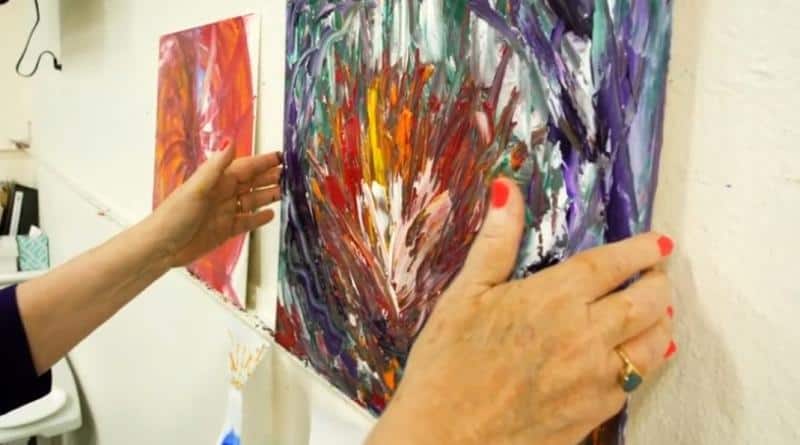
To begin a discussion on mental health, let’s examine a definition of mental health and the state of mental healthcare in the post-COVID era. Definitions of mental health vary, however one definition from psychiatry.org seems to sum up mental health quite well: “Mental health is the foundation for emotions, thinking, communication, learning, resilience, and self-esteem. Mental health is also key to relationships, personal and emotional well-being and contributing to community or society.” (American Psychiatric Association, 2018)
As the world recovers from the recent COVID crisis, people need mental health support more than ever. Just take a look at some recent numbers:
A survey done by the CDC revealed that cases of anxiety disorder and depressive disorder increased considerably between April and June of 2020 in the United States, due to the COVID-19 pandemic.
Of those who participated in the survey, 40.9% reported at least one mental or behavioral health condition: anxiety, depression, trauma-and stressor-related disorder or even increased substance abuse. Some survey participants even reported that they considered suicide in the 30-day period before they recorded their responses. (Czeisler, Lane, Petrosky, & et al;, 2020)
Children and adolescents have been disproportionately overwhelmed with mental health-related issues in recent years. Adolescents aged 12–17 years accounted for the largest proportion of children’s mental health–related emergency department visits during 2019 and 2020. And, during the height of the 2020 pandemic, the proportion of mental health–related visits for children aged 5–11 years and adolescents aged 12–17 years increased approximately 24% and 31%, respectively compared with those in 2019.
In 2020, a cross-age study in the Lancet found that 34 percent of COVID-19 patients were diagnosed with a neurological or psychiatric condition within 6 months of infection. The most common psychiatric conditions were anxiety disorders, followed by mood disorders, substance abuse disorders, and insomnia. (Van Zijl, 2021)
It’s evident that the COVID era has increased the number of people needing mental health assistance. Even in non-pandemic times, one in five (19 percent) U.S. adults experience some form of mental illness in a given year. (American Psychiatric Association, 2018) Fifty-six percent of adults with mental illness did not receive any mental health treatment, and this jumps to 60% among the youth. (Mental Health America, 2021)
Creating expressive, abstract art can be a simple and effective intervention for those experiencing difficult emotions. The population needs easy-to-access mental health tools like this, now more than ever before.
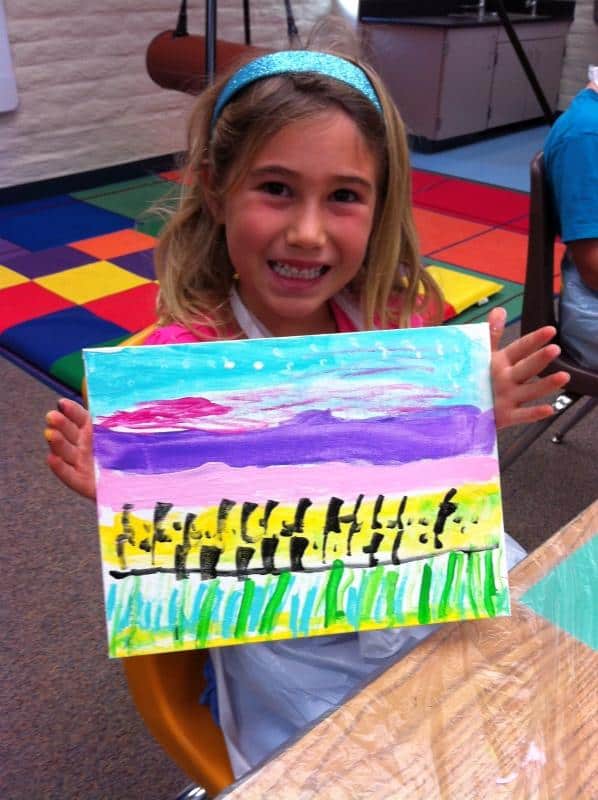
Studies on Art and Mental Health
Creating abstract art can provide positive benefits to many aspects of mental health. Before we examine the Art4Healing® Method in detail, let’s examine recent studies that support the benefits of creating expressive art.
UK studies on art and wellbeing
Activities involving abstract art can foster a sense of wellbeing by reducing mental distress, while enhancing mental health and life satisfaction.
In 2020, a study in the UK looked at a four-year span of data from nearly 24,000 participants, and the results were conclusive: People who were frequently engaged in arts had lower levels of mental distress and higher levels of mental functioning and life satisfaction than those who were infrequently engaged as well as better health behaviors, more social support from family and friends, and higher socioeconomic status. Significantly lower levels of mental distress were found amongst those who participated in arts activities more than once a week. (Wang, Mak, & Fancourt, 2020)
Another study in the UK concluded that visual arts participation can reduce reported levels of depression and anxiety; increase self-respect, self-worth, and self-esteem; encourage and stimulate re-engagement with the wider, everyday social world; and support in participants a potential renegotiation of identity through practice-based forms of making or doing. (Tomlinson, 2018)

World Health Organization results
The World Health Organization recently published an exciting report. In it, they analyzed over 900 publications, spanning 2000-2019, trying to answer one question: “What is the evidence on the role of the arts in improving health and well-being?”
On the subject of the preventive benefits of arts engagement in relation to mental health, the findings were encouraging. In various studies, activities such as making and listening to music, dancing, art and visiting cultural sites were all associated with stress management and prevention. Participation resulted in lower levels of biological stress in daily life and lower daily anxiety.
Arts engagement can also help to reduce the risk of developing mental illness such as depression in adolescence and in older age. Participating in arts activities can build self-esteem, self-acceptance, confidence, and self-worth, which all help to protect against mental illness. (Fancourt & Finn, 2019)
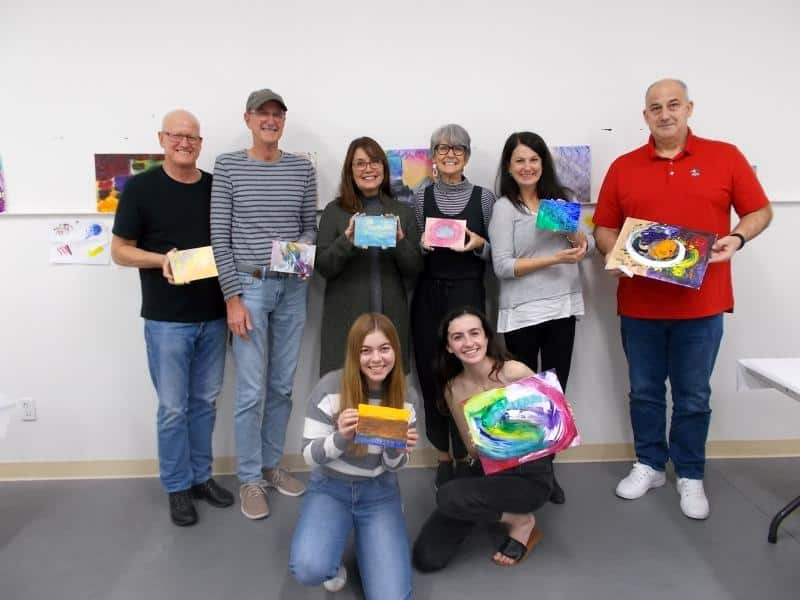
Art4Healing® Supports Mental Health
The cornerstone of the Art4Healing® Method is helping participants understand feelings and emotions that cannot be expressed in words. Over the past two decades, Art & Creativity for Healing has provided workshops to tens of thousands. Here are three positive benefits of using Art4Healing® to support mental health, along with inspiring Participant testimonials.
Awareness of Feelings
Art4Healing® can support mental health by surfacing feelings a Participant may not have been aware of. Often, Participants will share that they get in touch with previously unknown feelings during a workshop. Our process opens doors to these hidden feelings.
Participants begin to define hidden feelings through the act of intuitively painting colors on canvas. In the course of a workshop, these feelings that are made visible on canvas through the language of color. Participants can begin to process them through their visual representation.
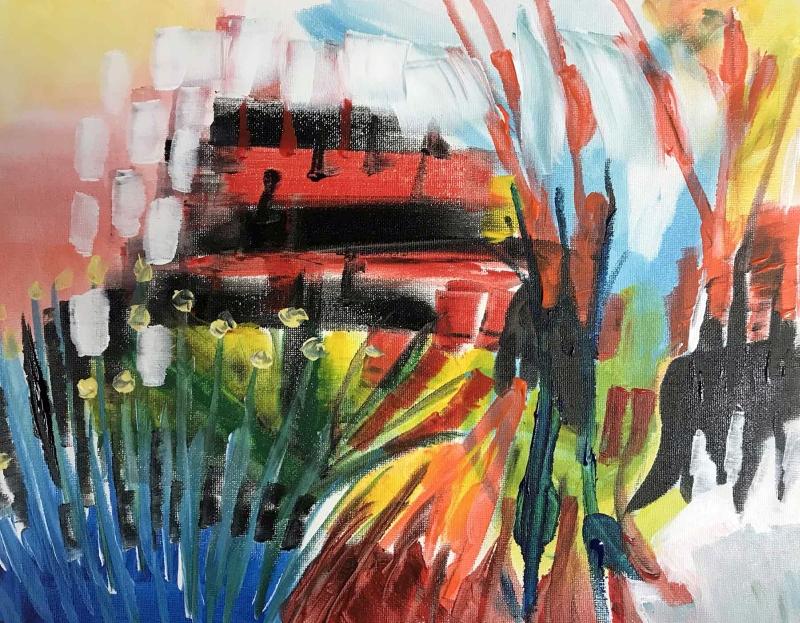
Processing Emotions
The ability to process emotions is fundamental to mental health. We’ve discussed how hidden feelings surface during an Art4Healing® workshop. The method allows Participants to respond to those feelings in a non-judgmental way. Because the method uses an intuitive approach, Participants unlock and release feelings with insight and clarity. By the end of a workshop, many have expressed a sense of relief.
One at-risk teen said, “Today I really connected to the anger exercise, and I got to express something that happened with my grandma last night and it was such a relief to be able to paint and talk about it.”
Another Participant said, “I have been feeling a lot of emotions – anger, anxiety, sadness. And as I painted, I felt a release of my emotions. It was relaxing for me to paint. As I added white at the end, I felt at peace with my feelings.”
Many Participants also shared their completed creations with a licensed clinician. They use the artwork as a catalyst for discussion, providing additional mental heath support though the Art4Healing® Method.
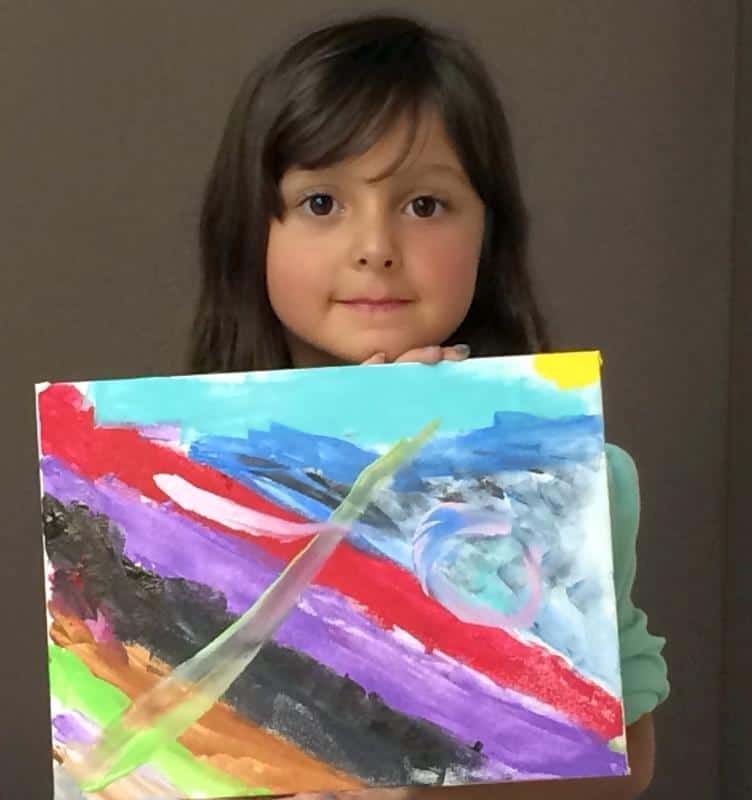
Sense of Security
The Art4Healing® Method not only creates awareness and a release of emotions, but also a sense of security for Participants. Security is imperative to fostering the exploration and processing of emotions related to mental health without stigma.
The abstract, intuitive approach used in the Art4Healing® method allows for privacy. Only the Participant knows the true meaning of their creation, and they can choose whether to share or not. Our method also bolsters confidence because there is no “right or wrong way” to complete an Art4Healing® creation. In a sense, Art4Healing® is expression without exposure.
One Wounded Warrior Participant shared, “This class really lets you express yourself with no pressure. I enjoy painting my feelings around those who are also in need of a safe way to express themselves.”
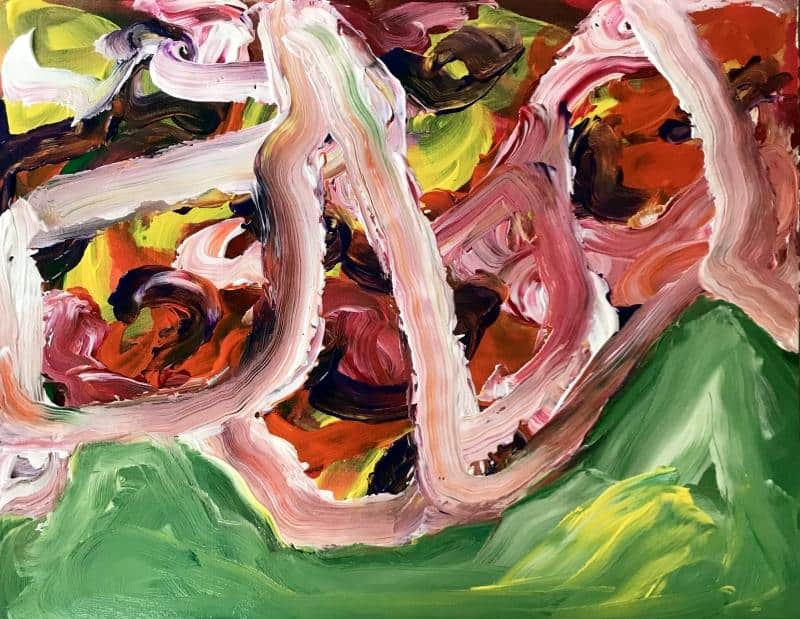
Powerful Testimonials of Additional Benefits
With over 20 years of experience and 85,000 Participants, Art & Creativity for Healing has received many success stories and inspiring testimonials. Here are a few that highlight how Art4Healing® can support mental health.
One Participant was happy to have Art4Healing® as a new mental health tool:
“It was interesting to see and think about my feelings in color. I don’t feel like I am an artist, but it was easy to paint how I felt being directed by the teacher. With all the mental health work I do, I get tired of talking about how I feel or writing it down. This was a nice change of pace to paint.”
One of our Certified Art4Healing® Facilitators uses our method in a clinical setting as a Licensed Clinical Social Worker. Here’s what she had to say:
“My name is Alissa Tertichny. I am a Licensed Clinical Social Worker with Kennesaw State University’s Department of Counseling and Psychological Services.
Our department started offering Art4Healing® Workshops in February 2019. These workshops are open to our campus community and are often recommended by our Staff as an adjunct service for our clinical clients.
The Art4Healing® workshops have been a helpful tool for students with a variety of clinical presentations, including anxiety, trauma, sexual assault, depression, and more.”
Alissa also shared Participant feedback from workshops held under this program:
- “Whenever I do these workshops, I feel like I have gotten emotions off my chest in a healthy way.”
- “I feel I can recognize success I have made by realizing and connecting with how I used to feel. I can also connect with my trauma in a healthy way.”
- “I feel a little bit better mentally and it cleared my mind. I feel less stressed, and I feel like I can have a more productive day.”
- “It was a positive healing experience.”
- “I feel more relaxed with free expression for my anxiety.”

Statistics from our Workshops
Art4Healing® can be a powerful tool to help support mental health. While we have many inspiring Participant testimonials, there is also statistical evidence to prove our method works.
In 2020, we engaged Doctors Nonprofit Consulting to analyze 10 years of exit survey data from our workshops. This data set consisted of 19,234 responses collected from adults and children from 2009-2020. (Doctors Nonprofit Consulting, 2020)
The analysis showed that, overall, 96% of the 2009-2020 participants reported that they were satisfied with their workshop.
Since 2009, 81.5% of participants strongly agreed that the workshop was great. Seventy-eight percent of participants strongly agreed that the workshop helped them express their emotions.
Furthermore, 77.8% of participants strongly agreed that they felt better after the workshop and 85.5% strongly agreed that the instructor was approachable. Furthermore, 93.7% of all participants agreed that they themselves would take another workshop from the program.
In the 2011-2020 data, the most selected reasons that adult participants took a workshop were Anxiety/Stress (25.16%) and Sadness (23.09%).
Our Founder's Story
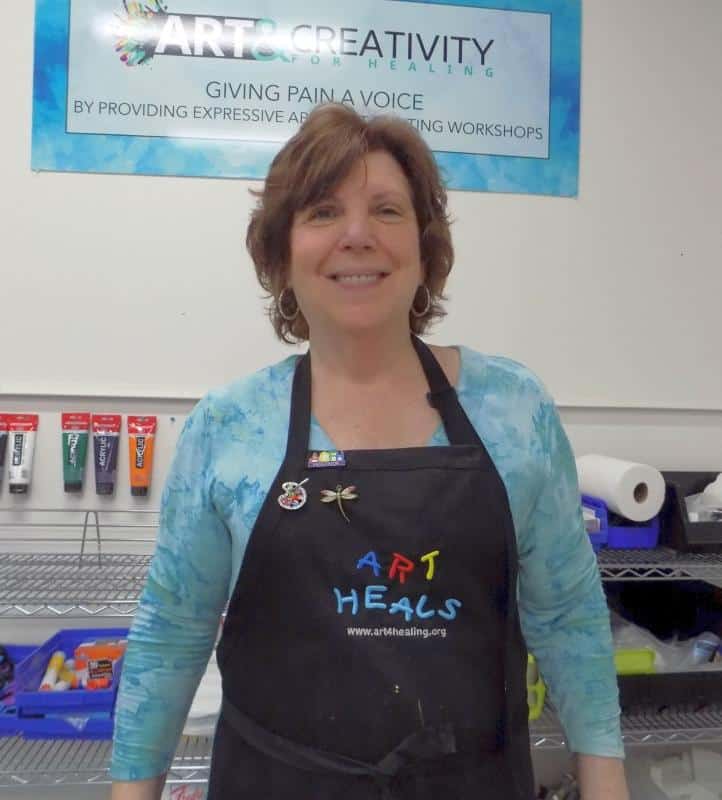
We’ve discussed the need for mental health tools and the positive effects of abstract art on mental health. We continued to explain three benefits of our Art4Healing® method. Now, read the story of the Founder behind the method, Laurie Zagon, and the impact that creating expressive, abstract art has had on her life. Here’s Laurie’s path to mental health by using art as a coping mechanism from the age of 8.
In Laurie’s words:
Growing up in Queens, New York had its challenges. We lived in Flushing, Queens. Both parents worked; My Dad was a Liquor Salesman and returned home at 10pm every day. He was intoxicated when he arrived home each night. He would have his last 2 shots of whiskey and pass out in the living room club chair.
My Mother was an admin assistant for an airline and loved her job, but she was always screaming and yelling at my Dad, my sister and me when she was home. She had a temper and if we said something she believed was wrong, it resulted in her slapping and hitting us. She clearly was not happy with her life. She often spoke about having married the wrong man.
My parents created such a toxic environment that I remember suicidal thoughts as early as eight years old. I thought about cutting my wrists but was too scared to cut myself. I also remember banging my head against the wall in my bedroom out of frustration. There was a lack of love and care in my family. The verbal barrages were constant, as was as the out-of-control anger. I dreamt of leaving the house to get away from it all.
To escape, every day I would go down to the basement and spend most of my time after school and through the evening with art supplies given to me by my uncle. When I first received oil paints and canvases from my uncle, without any training, I painted my first painting. The theme was me collecting tickets at a movie theater. My uncle told me I was a good artist, and his words encouraged me. I was an artist if someone said I was an artist!
When I descended to the basement, my world expanded. I was now saying things with art to express myself. I made drawings and created little books that reflected happily ever after endings. Art became my coping mechanism and started me on my road to mental health.

As I got older, I enjoyed the art classes in junior high with a great teacher. Mrs. P introduced me to many different mediums: drawing, printmaking, painting, sculpture. Art was my friend and confidant. When I was ready for high school, I was accepted into the High School of Art & Design in Manhattan.
I had to take a bus and a train from Queens to Manhattan every day to get to school. I didn’t mind at all since it took me away from the unhappiness and despair I felt at home. The people, theatre, galleries, museums, and the sights and smells of the city were a catalyst for my art.
When I graduated High School, I was accepted to the Maryland Institute of Art, in Baltimore, on scholarship. I was out of my house and a new chapter in my life had begun. From there I was given a full fine arts fellowship to Syracuse University and began as a graduate student/ art instructor for freshmen at the university as well.
When I graduated, I moved back to New York to begin my career as a fine artist and to teach painting, design, and color theory classes at the City University of New York. I married my boyfriend; two artists together were not a great match. I went to therapy as a result. It was a great help speaking with a professional who could help someone like me sort out my anger. Ultimately, it became clear that my husband and I were not good together, and we eventually divorced.

I met with my therapist for an hour and a half a week. It cost half my salary, but I didn’t care. I knew I needed help! Between the counseling and creating giant colorful paintings on canvas, my thoughts became more and more positive. The therapy helped me to reconcile my past and my art. It also helped me work through my unhealthy coping mechanisms, which were drug use and food addiction. Finally, the hard work and therapy I received opened me to a spiritual path that has always kept me focused and grateful to God.
I created Art4Healing® workshops for children, teens, and adults that struggle with all types of mental health issues. Now, I teach others the language of color and painting on canvas as a way to give pain a voice. My previous, negative life experiences have transformed into a way for me to bless others.
Just as my uncle gave me my first art supplies when I was 8 years old, I am able to give out thousands of art supplies to disadvantaged children and teens. To-date, Art and Creativity for Healing workshops have allowed over 85,000 participants to experience what I have. I hope I’ve given many a new creative direction in their life.
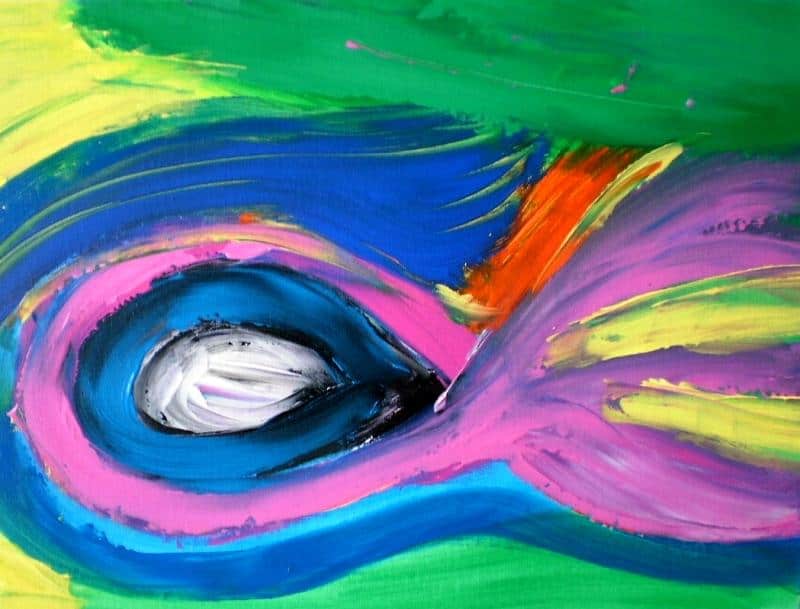
Conclusion
In this report, we’ve considered the state of mental health and the need for mental health tools and services in the post-COVID era. We’ve also examined how creating expressive, abstract art can have a positive impact on mental health. Laurie Zagon developed the Art4Healing® method to help participants express feelings when words do not suffice. Understanding and expressing these feelings can bring participants a sense of wellbeing, promote positive brain changes, and support mental health.
Additional Resources
Pre-Recorded Workshops
We have 35 courses available online! Relax and experience the Art & Creativity for Healing method in the comfort of your own space. All courses are only $29! Check out our course list and introduction video from Laurie here:
Online Courses: https://courses.art4healing.org/
Live Online Workshops
We offer a variety of live, online 2 hour workshops via Zoom! Visit our website for frequently asked workshop questions and our upcoming workshop calendar:
Live Online Workshop FAQ’s: https://art4healing.org/live/
Workshop Calendar: https://art4healing.org/calendar/
Studio Workshops
We offer a variety of 3-hour workshops at our Studio on Laguna Hills! Visit our website for frequently asked workshop questions and our upcoming workshop calendar:
Workshop FAQ’s: https://art4healing.org/faq/
Workshop Calendar: https://art4healing.org/calendar/
Program Outcomes and Past Special Reports
We engage an outside party to help us compile Outcome Data for all of our Programs. We encourage you to visit our Results page, where you can view Outcome Data. We also have prior Special Reports available for you to review!
Results: https://www.art4healingorg/results/
Art4Healing® International Certification Program Online
Can’t make it to our studio? We are proud to offer the only globally recognized Art4Healing® Certification, exclusively available online.
To become certified online, students experience and complete Art4Healing® workshops and assignments through an online platform within a timeline of 9 months (or less). Students are matched with an Art4Healing® Coach who will answer questions and review his/her assignments and facilitated workshops.
Find out more about this exclusive program here:
International Certification Online:
https://art4healing.org/international-certification/
Painting Your Heart Out, by Laurie Zagon
Read the inspiring account of how Laurie Zagon started Art & Creativity for Healing, a Southern California non-profit organization that provides fine art workshops for children, teens, and adults suffering from abuse, illness, grief, or stress.
Learn from former students about the extraordinary impact that Art & Creativity for Healing has had on their lives. Art4Healing® Painting Your Heart Out is a non-threatening method that enables people who cannot draw a straight line to become successful in expressing their feelings through art. The creative process used in this book encourages participants to paint using abstract strokes of color on canvas to translate life’s everyday stresses.
Available on Amazon: https://www.amazon.com/Art-Healing-Painting-Your-Heart/dp/1517072247/
Works Cited
- American Psychiatric Association. (2018, August). What Is Mental Illness? Retrieved from Psychiatry.org: https://www.psychiatry.org/patients-families/what-is-mental-illness
- Caddell, J. (2020, July 3). What Is Stigma? Retrieved from VeryWell Mind: https://www.verywellmind.com/mental-illness-and-stigma-2337677
- Czeisler, M., Lane, R., Petrosky, E., & et al;. (2020, July). Mental Health, Substance Use, and Suicidal Ideation During the COVID-19 Pandemic – United States, June 24–30, 2020. MMWR Morb Mortal Wkly Rep 2020, 69, 1049-1057. Retrieved from http://dx.doi.org/10.15585/mmwr.mm6932a1
- Doctors Nonprofit Consulting. (2020). Final Outcomes Report for Art & Creativity for Healing Inc. – 10-Year Report. Retrieved from Art & Creativity for Healing: https://art4healing.org/results/
- Fancourt, D., & Finn, S. (2019). What is the evidence on the role of the arts in improving health and well-being? A scoping review. World Health Organization. Copenhagen: WHO Regional Office for Europe. Retrieved from https://www.euro.who.int/en/data-and-evidence/evidence-informed-policy-making/publications/2019/what-is-the-evidence-on-the-role-of-the-arts-in-improving-health-and-well-being-a-scoping-review-2019
- Mental Health America. (2021). The State Of Mental Health In America. Retrieved from Mental Health America: https://mhanational.org/issues/state-mental-health-america
- Tomlinson, A. (2018, January). Visual Art and Mental Health. London: What Works Centre for Wellbeing. Retrieved from What Works Wellbeing: https://whatworkswellbeing.org/wp-content/uploads/2020/01/Full-report-art-mental-health-wellbeing-Jan2018_0146725200.pdf
- Van Zijl, J. (2021, April 8). 1 In 3 COVID-19 Survivors Have Neurological Or Psychiatric Problems Within 6 Months. Retrieved from IFL Science: https://iflscience.com/health-and-medicine/1-in-3-covid19-survivors-have-neurological-or-psychiatric-problems-within-6-months/
- Wang, S., Mak, H., & Fancourt, D. (2020). Arts, mental distress, mental health functioning & life satisfaction: fixed-effects analyses of a nationally-representative panel study. BMC Public Health, 20, 208. doi:https://doi.org/10.1186/s12889-019-8109-y
Contact Us
Want More Information?
We’d love to hear from you today. We’re standing by to speak with you one-on-one about the power of healing art!
